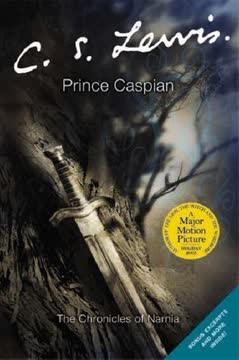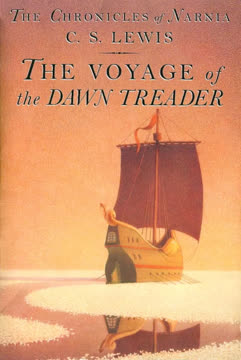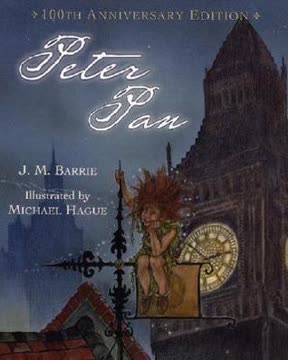Plot Summary
Through the Glass Darkly
On a snowy afternoon, Alice, restless and imaginative, finds herself pondering the world beyond her parlor's looking-glass. With her kittens as audience, she muses about a reversed world, where everything is backward and familiar things become strange. Suddenly, the glass softens, and Alice steps through into Looking-glass House, where the ordinary is inverted and the impossible is possible. Here, chess pieces come to life, and the rules of logic and language are upended. This crossing marks the beginning of Alice's journey into a world governed by its own peculiar logic, where she is both participant and observer in a grand, living game.
The Living Chessboard
Alice soon realizes that the world she's entered is structured like a giant chessboard, with brooks marking the boundaries between squares. The Red and White Queens explain that she is a pawn in a game, and if she can traverse the board to the eighth square, she will become a Queen herself. The landscape is divided, and every move is dictated by the rules of chess, but the logic is dreamlike and arbitrary. Alice's journey becomes a quest for advancement, with each square presenting new challenges and characters, all while the game's rules both guide and confound her.
Flowers That Speak
In the garden, Alice encounters flowers that can talk, each with its own personality and opinions. The Tiger-lily, Rose, and others critique Alice's appearance and manners, revealing a world where even plants have social hierarchies and prejudices. The flowers' conversation is both comical and biting, reflecting the absurdity of social conventions. The Red Queen appears, larger than before, and Alice learns that to reach her goals, she must navigate not just the chessboard, but also the tangled etiquette and logic of Looking-glass Land.
The Red Queen's Race
The Red Queen takes Alice on a frantic run, but despite their speed, they remain under the same tree. The Queen explains that in this world, "it takes all the running you can do, to keep in the same place." This paradoxical race is a metaphor for the nonsensical logic of the Looking-glass world, where effort does not guarantee progress. The Queen gives Alice instructions for her journey, mapping out the squares she must cross and the strange characters she will meet, setting the stage for the episodic adventures to come.
Train to Nowhere
Alice boards a train to cross into the next square, but the journey is filled with odd passengers—goats, beetles, and a man made of paper—each with their own nonsensical logic. Tickets are demanded, but Alice has none, and the rules of travel are as arbitrary as everything else. The train jumps over a brook, and Alice is deposited in a new part of the chessboard, where she meets a gnat who discusses the meaning of names and the absurdity of language. The journey underscores the instability and unpredictability of the Looking-glass world.
The Wood of No Names
Alice enters a wood where things have no names, and she forgets her own identity. She befriends a fawn, but as soon as they leave the wood and regain their names, the fawn flees in fear. This episode explores the relationship between language, identity, and reality—without names, distinctions blur, and relationships change. Alice's brief loss of self is both unsettling and enlightening, highlighting the fragility of personal identity in a world where meaning is fluid.
Tweedle Logic
Alice encounters the twin brothers Tweedledum and Tweedledee, who engage her in circular arguments and paradoxes. They recite the poem "The Walrus and the Carpenter," a tale of deception and consumption, and debate the nature of reality, suggesting that Alice herself may be just a character in the Red King's dream. Their logic is infuriating and hilarious, challenging Alice's sense of what is real and what is nonsense. The episode ends with the threat of a battle, interrupted by a monstrous crow.
The Walrus and the Oysters
The poem recited by Tweedledum and Tweedledee tells of a Walrus and a Carpenter who lure young oysters from their bed with promises of a walk, only to eat them. The story is a darkly comic allegory about innocence, trust, and betrayal, and Alice is troubled by the moral ambiguity of the characters. The poem's inclusion within the narrative blurs the line between story and reality, reinforcing the dreamlike, layered structure of the book.
Dreaming Kings
Alice is shown the sleeping Red King, and Tweedledee suggests that Alice is merely a figment in the King's dream. If he wakes, she will vanish. This existential puzzle unsettles Alice, raising questions about the nature of consciousness and reality. The idea that she might be someone else's dream challenges her autonomy and the solidity of her world, deepening the book's exploration of subjectivity and the boundaries between dreamer and dream.
Wool, Water, and Jam
Alice helps the disheveled White Queen, who lives backwards and remembers things before they happen. The Queen's logic is inverted, and her conversation is filled with paradoxes—jam is always promised for yesterday or tomorrow, but never today. The Queen transforms into a sheep, and the setting shifts to a shop where objects constantly change. Alice is swept into a boat, rows among scented rushes, and is returned to the shop, where she buys an egg that becomes Humpty Dumpty. This sequence is a surreal meditation on time, memory, and the instability of meaning.
The Shop That Shifts
The shop run by the Sheep is a place where nothing stays the same—shelves empty as Alice looks at them, and objects morph into other things. The boundaries between shop, river, and forest blur, and Alice's attempts to grasp or purchase something are always frustrated. This chapter highlights the slipperiness of reality in the Looking-glass world, where desire and attainment are always just out of reach, and the act of seeking changes the object sought.
Humpty's Wordplay
Alice meets Humpty Dumpty, who sits precariously on a wall and insists that words mean whatever he chooses them to mean. Their conversation is a battle over language, meaning, and authority. Humpty Dumpty explains portmanteau words and interprets the poem "Jabberwocky," demonstrating the arbitrary nature of language. His fall, inevitable and unpreventable, is both comic and tragic, symbolizing the fragility of constructed meaning and the limits of self-importance.
The Lion and the Unicorn
Alice witnesses the Lion and the Unicorn fighting for the White King's crown, a spectacle that parodies chivalric contests and political rivalries. The battle is interrupted for refreshments, and the participants are more interested in food than victory. Alice is introduced to the Lion and the Unicorn, who debate her status as a "monster" and the reality of fabulous creatures. The episode satirizes competition, authority, and the arbitrary nature of power.
The Knight's Inventions
As Alice nears the end of her journey, she is "captured" and then rescued by the bumbling but gentle White Knight. He is an eccentric inventor, full of impractical ideas and elaborate contraptions. Their conversation is a mix of earnestness and absurdity, and the Knight's song is both touching and nonsensical. He represents the creative, quixotic spirit, and his farewell marks Alice's final step toward becoming a Queen.
Queen Alice Ascends
Crossing the last brook, Alice finds herself crowned as a Queen. She is joined by the Red and White Queens, who subject her to a bewildering examination in manners, arithmetic, and language. The rules are nonsensical, and the Queens' behavior is both patronizing and chaotic. Alice's new status brings not clarity or power, but more confusion, as she is swept into a world of endless rules and impossible expectations.
The Banquet of Nonsense
Alice is the guest of honor at a banquet attended by a bizarre assortment of creatures. The meal is governed by illogical etiquette—she cannot eat what she's been introduced to, and the food itself talks back. The party descends into chaos, with guests and dishes transforming, and Alice is pushed to her limits. In a final act of rebellion, she seizes the tablecloth, bringing the feast to a crashing end.
Shaking and Waking
As the world dissolves into confusion, Alice finds herself shaking the Red Queen, who shrinks and transforms into her kitten. The Looking-glass world collapses, and Alice wakes in her own parlor, surrounded by her kittens. The adventure is revealed as a dream, but its logic and lessons linger, blurring the line between fantasy and reality.
Whose Dream Was It?
Alice ponders whether she dreamed the Looking-glass world, or whether she was merely a character in the Red King's dream. The story ends with this unresolved question, inviting readers to reflect on the nature of dreams, reality, and the power of imagination.
Characters
Alice
Alice is the protagonist, a young girl whose curiosity and rationality are constantly tested by the illogical world she enters. She is both participant and observer, striving to make sense of the nonsensical and to assert her identity amid shifting realities. Her journey is one of self-discovery, as she navigates challenges, confronts authority, and ultimately claims her own agency. Alice's psychological resilience and adaptability allow her to survive and even thrive in a world that defies reason, making her a symbol of the questioning, imaginative mind.
The Red Queen
The Red Queen is a figure of strict rules and relentless motion, embodying the arbitrary authority of the Looking-glass world. She is both mentor and antagonist to Alice, pushing her to run faster just to stay in place and subjecting her to impossible standards. The Red Queen's logic is circular and her expectations are contradictory, reflecting the absurdity of social and institutional power. Her relationship with Alice is both adversarial and instructive, forcing Alice to question and ultimately reject nonsensical authority.
The White Queen
The White Queen is the opposite of the Red Queen—disheveled, forgetful, and living her life in reverse. She is kind but helpless, often in need of Alice's assistance. Her backward logic and memory serve as a parody of time and causality, and her vulnerability elicits both sympathy and frustration. The White Queen's relationship with Alice is more maternal, but her inability to function in the present highlights the limitations of living in the past or future.
Tweedledum and Tweedledee
These identical brothers are masters of paradox and circular reasoning, delighting in wordplay and contradiction. They challenge Alice's understanding of reality, suggesting that she may be nothing more than a dream. Their relationship is both cooperative and combative, culminating in a mock battle that is interrupted by external chaos. Psychologically, they represent the duality and ambiguity inherent in language and logic.
Humpty Dumpty
Humpty Dumpty is obsessed with the power of language, insisting that words mean whatever he chooses. His conversations with Alice are exercises in semantic manipulation, exposing the instability of meaning. Humpty's pride and isolation foreshadow his inevitable fall, which serves as a metaphor for the dangers of solipsism and the limits of self-defined reality.
The White Knight
The White Knight is a well-meaning but bumbling figure, full of impractical inventions and earnest advice. He escorts Alice on the final leg of her journey, offering both protection and companionship. His creativity and vulnerability make him one of the most sympathetic characters, embodying the spirit of invention and the folly of overcomplication. His farewell to Alice is poignant, marking her transition from pawn to Queen.
The Red King
The Red King is mostly passive, sleeping through the story, but his dream is said to contain Alice and the entire Looking-glass world. He represents the ultimate uncertainty of reality—if he wakes, does Alice cease to exist? The Red King's presence raises existential questions about the nature of consciousness and the boundaries between dreamer and dream.
The Lion and the Unicorn
These two creatures are locked in an endless, ritualized battle for the crown, parodying political and social rivalries. Their conflict is more theatrical than dangerous, and their interactions with Alice are marked by mutual suspicion and curiosity. They represent the futility of competition and the arbitrary nature of power.
The Sheep
The Sheep runs a shop where nothing stays the same, and later rows Alice down a river. She is brusque and practical, in contrast to the other characters' absurdity. The Sheep's shifting identity and environment highlight the instability of the Looking-glass world and the elusiveness of desire.
The Gnat
The Gnat engages Alice in a conversation about names and the meaning of language, introducing her to the idea that identity is tied to words. His gentle, mournful demeanor adds a note of introspection to Alice's journey, prompting her to consider the deeper implications of her experiences.
Plot Devices
Chessboard Structure
The entire story is structured as a chess game, with Alice starting as a pawn and advancing square by square to become a Queen. Each chapter corresponds to a move or a square, and the characters represent chess pieces. This device provides both a framework for the episodic narrative and a metaphor for personal growth, ambition, and the arbitrary rules that govern society.
Dream Logic and Paradox
The Looking-glass world operates according to dream logic—time runs backward, language is fluid, and cause and effect are inverted. Paradoxes abound, and the rules change without warning. This device allows for playful exploration of philosophical and linguistic ideas, while also creating a sense of instability and wonder.
Wordplay and Nonsense
Puns, portmanteau words, and literal interpretations of idioms are central to the book's humor and themes. Characters like Humpty Dumpty and the Tweedles use language to confound and challenge Alice, exposing the arbitrariness of meaning and the power dynamics inherent in communication.
Metafiction and Self-Reference
Characters debate whether Alice is real or merely a dream, and the narrative frequently draws attention to its own artificiality. Poems and songs within the story comment on the action, and the ending leaves the question of authorship and reality unresolved. This self-referentiality invites readers to reflect on the nature of fiction and imagination.
Transformation and Instability
Characters shift identities (the Queen becomes a sheep, the Red Queen becomes a kitten), and settings morph without warning (shop to river to forest). This instability reflects the fluidity of dreams and the mutability of meaning, reinforcing the book's central themes.
Analysis
"Through the Looking-Glass" is a masterwork of literary nonsense, using the structure of a chess game and the logic of dreams to explore the instability of language, identity, and reality. Carroll's world is one where rules are arbitrary, authority is capricious, and meaning is always in flux. The book satirizes social conventions, education, and power, while celebrating the resilience and curiosity of the individual mind. Alice's journey is both a literal quest and a metaphor for growing up—navigating a world that often seems illogical and unfair, but where imagination and adaptability are the keys to survival. The unresolved question of whose dream the story is—Alice's or the Red King's—invites readers to consider the power of perspective and the creative potential of the mind. In a modern context, the book remains a playful yet profound meditation on the nature of reality, the limits of logic, and the enduring value of wonder.
Last updated:
Review Summary
Through the Looking-Glass receives mixed reviews, with many praising its whimsical characters, clever wordplay, and surreal logic. Readers appreciate the chess-themed plot and iconic scenes like Jabberwocky. Some find it less engaging than the first Alice book, citing scattered storytelling and overwhelming nonsense. However, most agree it's a timeless classic that appeals to both children and adults, offering layers of meaning and mathematical allegories. Many reviewers note its cultural significance and enduring influence on literature and popular culture.
Alice's Adventures in Wonderland Series
Similar Books
Download PDF
Download EPUB
.epub digital book format is ideal for reading ebooks on phones, tablets, and e-readers.















